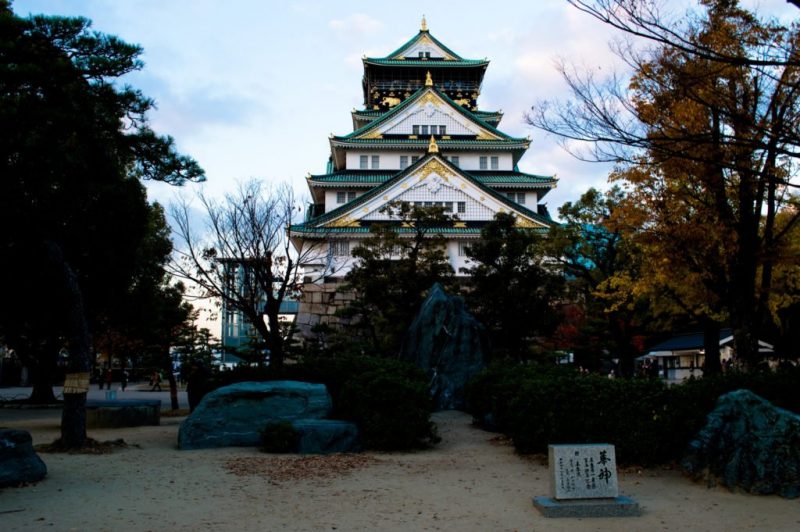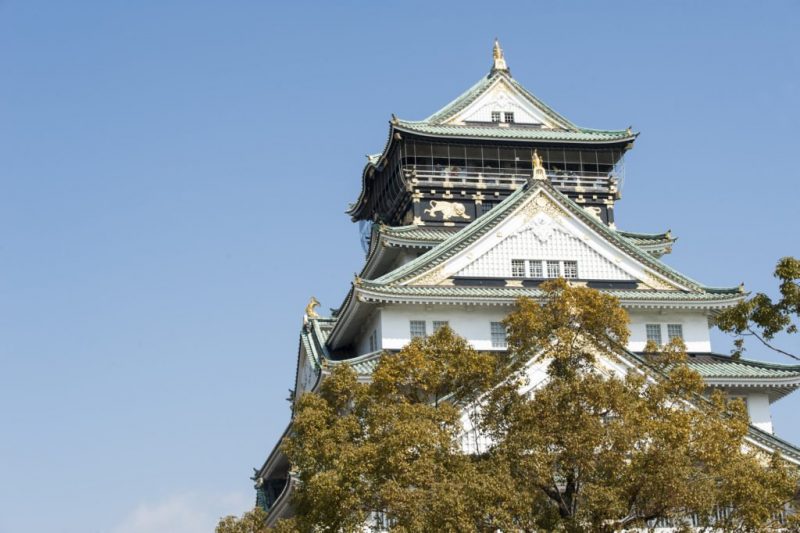Osaka is missed from the itineraries of many visitors to Japan who instead opt for what they think is a more culturally historic city in Kyoto and a more exciting one in Tokyo. As those from the area will no doubt tell you, Osaka can be lighter on the wallet than Tokyo but heavier on the stomach, proud of its reputation as the food capital of Japan.
Whilst a trip to Japan that solely consists of Tokyo and Osaka may seem a little repetitive as despite their perceived cultural differences, the two occupy a similar place to many in terms of tourism. However, those wishing to skip the capital altogether shouldn’t fear, Osaka is much more than ‘Tokyo-light’ and a worthy rival in every regard.

History of Osaka
Unlike Tokyo, which grew from a small fishing village into the world’s largest city within the space of 400 years, Osaka has a much longer history. Also unlike Tokyo, which exists almost solely because of one man’s decision to base his Empire there, Osaka is a much more natural fit for population growth.
Though it lies on the east coast, it is a perfect halfway point among the islands of Japan and spawned from the point where the Yodo River meets Osaka Bay. It was for this reason that in the 5th Century, it became the gateway for foreign visitors from Korea, China, and elsewhere. As a result of its prominence in trade, Emperor Kōtoku made it his capital upon coming to power in 645 A.D. Formerly known as Naniwa, this commercial hub would be Japan’s capital off-and-on again over the following 100 years.
Osaka flirted with disaster in the 1600s as the castle town was burnt to the ground and the capital shifted far north to Edo (Tokyo), beginning a centuries-long rivalry. However, this move was just what was needed to allow Osaka to develop its own truly identifiable culture in two aspects. Acting as an incoming base for all goods shipped to Japan, and an outgoing one to all its other major cities allowed it to claim the mantle of the ‘Nation’s Kitchen’. It also boosted the prosperity of citizens, bestowing upon Osaka the role of commercial and industrial center for a long period of time.

While post-war Tokyo rebirthed into the economic behemoth we know today, Osaka’s identity altered also. Though it would never regain a position of equal official power, Osaka has long been the sub-capital of Japan, with many of its residents today still believing it counters Tokyo in terms of importance. This can be seen most vividly in the passionate football fans between rival teams and least conspicuously in how Tokyo-ites stand on the left-hand side of an escalator and Osaka-ians pointedly stand on the right.
Location of Osaka
Osaka’s prominent location in Kansai made it popular for 5th-century sea men and is still a good reason to visit it today. In a feat that can almost only happen in Japan, the cities of Osaka, Kyoto, and Kobe have grown outwards to such an extent that they have almost morphed into one.
Known as the Keihanshin Metropolitan Area, this ‘city’ is smaller than the Greater Tokyo Area but still larger than anywhere else in Japan. Visitors to any of these cities located here will find it easy enough to travel between all three, just be warned that there’s not a whole lot of green spaces in between.
What to do in Osaka
Despite its size, Osaka is relatively easy to navigate around. Much of what makes the city great can be divided neatly in two; work and play. The financial center in the north (‘Kita’) surrounds the JR Osaka Station and contains a labyrinth of underground shopping malls and the striking Umeda Sky Building. Spend a few hours exploring this urban landscape by day before heading south to ‘Minami’. Here, the twin areas of Dotonbori and Shinsaibashi are centered around Umeda Station and offer Osaka’s most exciting area and atmosphere, especially as day turns into night.
While canal cruises sail idly through the canal in the center, thousands of people descend upon this neon paradise every night to shop, eat, and drink. Start from the iconic ‘Glico’ running-man advertisement and explore Osaka’s prime tourist jewel. This is the best place to try just one of Osaka’s many local delicacies, such as ‘Okonomiyaki’.

Between these poles lies Osaka Castle, while in the bay area to the west is Universal Studios Japan. Not the most authentically Japanese of excursions but a spectacular day-out nonetheless. Further to the south sits the retro-area known paradoxically as Shinsekai (‘New World’). Created before WWII as an example of modern technology and architecture, it was forgotten in the years since. Now it exists as a time-warp to a time of a long ago, particularly its landmark Tsūtenkaku Tower.
It’s highly recommended you join our Best of Osaka Walking Tour for an initial overview of the city. Your local tour guide will take you on a comprehensive tour through all the highlights of the city, sharing unique insights and helping you gain your bearings. Since Osaka is the food capital of Japan, travelers should not miss out on the many tasty options Osaka has to offer. Joining our Osaka Food Tour is an ideal way to taste all the options and indulge.
Join the Best of Osaka Walking Tour
Visiting Osaka
Budget for at least a weekend exploring the sights, sounds, and tastes of Osaka, and even longer if you plan on visiting the neighboring cities of Kobe and Kyoto. Airbnb is a great solution for those on a tight time frame as you can find places conveniently situated in the great sprawl between all three.












